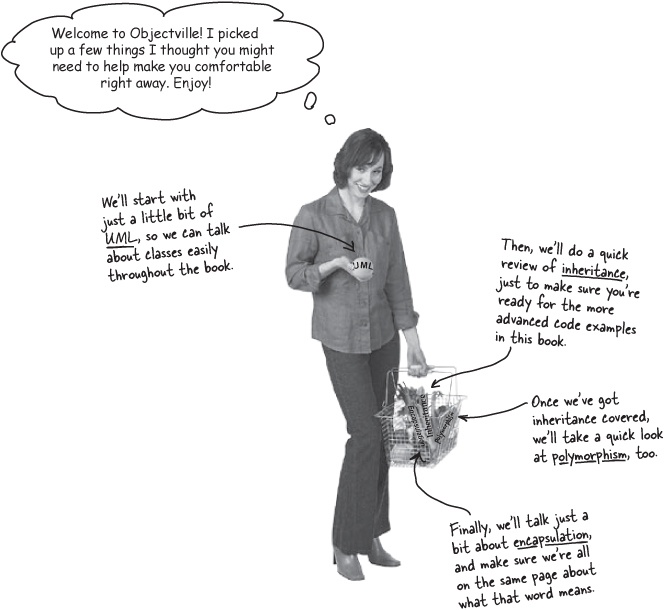Appendix B. Welcome to Objectville: Speaking the Language of OO

Get ready to take a trip to a foreign country. It’s time to visit Objectville, a land where objects do just what they’re supposed to, applications are all well-encapsulated (you’ll find out exactly what that means shortly), and designs are easy to reuse and extend. But before we can get going, there are a couple of things you need to know first, and a few language skills you’re going to have to learn. Don’t worry, though, it won’t take long, and before you know it, you’ll be speaking the language of OO like you’ve been living in the well-designed areas of Objectville for years.
Welcome to Objectville
Whether this is your first trip to Objectville, or you’ve visited before, there’s no place quite like it. But things are a little different here, so we’re here to help you get your bearings before you dive into the main part of the book.

UML and class diagrams
We’re going to talk about classes and objects a lot in this book, but it’s pretty hard to look at 200 lines of code and focus on the big picture. So we’ll be using UML, the Unified Modeling Language, which is a language used to communicate just the details about your code and application’s structure that other developers and customers need, without getting details that
Get Head First Object-Oriented Analysis and Design now with the O’Reilly learning platform.
O’Reilly members experience books, live events, courses curated by job role, and more from O’Reilly and nearly 200 top publishers.
